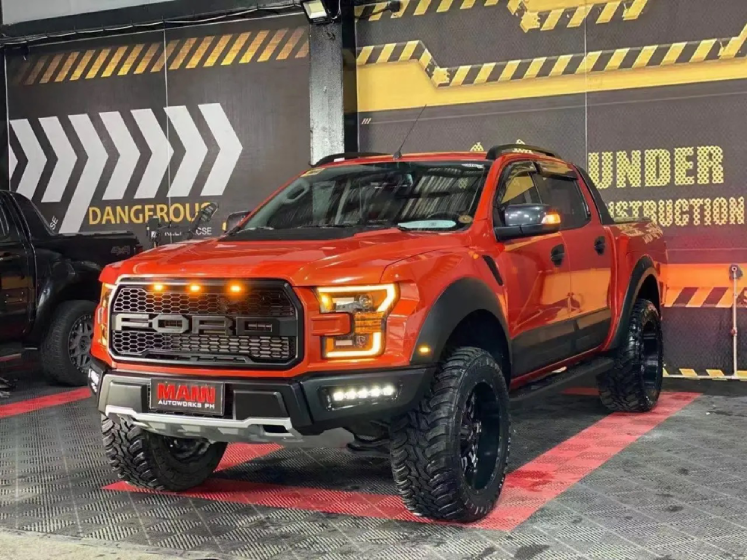

In the vibrant world of automotive customization, enthusiasts continuously seek ways to personalize and elevate the appearance and performance of their vehicles. One of the most popular methods for achieving this is through the use of body kits. These kits, comprised of various exterior components, hold significant importance in the realm of automotive customization, offering enthusiasts the opportunity to transform the look and feel of their vehicles according to their unique preferences.
Body kits encompass a range of aftermarket exterior modifications designed to enhance the aesthetics and performance of vehicles. The primary purpose of these kits is to customize the appearance of a car, making it stand out from factory models and reflecting the owner's individual style. From subtle enhancements to dramatic transformations, body kits allow enthusiasts to express their personalities and creativity through their vehicles.
The origins of body kits can be traced back to the early days of automotive customization, where enthusiasts began experimenting with modifications to differentiate their vehicles from stock models. Over time, this practice evolved, giving rise to the aftermarket industry we know today. The cultural significance of body kits is deeply intertwined with the automotive enthusiast community, where enthusiasts gather to share ideas, showcase their builds, and push the boundaries of customization.

1. Widebody Kits:
Widebody kits are among the most visually striking modifications available to car enthusiasts. These kits feature extended fenders and body panels, giving the vehicle a wider and more aggressive stance. Widening the vehicle's body not only enhances its aesthetic appeal but also allows for the installation of wider wheels and tires, improving grip and stability during high-speed maneuvers. Widebody kits are particularly popular among performance-oriented enthusiasts looking to optimize their vehicles for track use or showcase them at car shows.
2. Lip Kits:
Lip kits consist of front, side, and rear lip spoilers that attach to the existing body panels of the vehicle. Unlike widebody kits, lip kits are relatively subtle in appearance but can still have a significant impact on the car's overall aesthetic. These kits are popular among enthusiasts looking to add a touch of aggression to their vehicle's appearance without drastically altering its silhouette. Lip kits come in a variety of styles and materials, allowing owners to customize their vehicles to suit their tastes.
3. Bumper Kits:
Bumper kits focus on modifying the front and rear bumpers of the vehicle, often incorporating aerodynamic features such as air vents, splitters, and diffusers. These kits not only enhance the vehicle's visual appeal but also improve its aerodynamic performance, reducing drag and increasing stability at high speeds. Bumper kits are available in a range of styles, from subtle enhancements to aggressive designs inspired by motorsport.
When choosing a body kit for their vehicle, enthusiasts must consider several factors, including visual impact, performance enhancements, and practical considerations. Widebody kits are renowned for their dramatic appearance and track-ready performance but may be impractical for daily driving due to their increased width. Lip kits offer a more subtle aesthetic enhancement and are suitable for everyday use, while bumper kits strike a balance between visual appeal and aerodynamic performance.
In recent years, the body kit industry has seen significant advancements in materials and technology, leading to innovative new products that offer both style and performance. Carbon fiber has become increasingly popular due to its lightweight properties and high strength-to-weight ratio, allowing for the creation of body kits that are both durable and lightweight. Technological advancements in manufacturing techniques have also enabled the production of body kits with intricate designs and precise fitment, ensuring seamless integration with the vehicle's existing body panels.
Body kits play a vital role in automotive customization, allowing enthusiasts to personalize their vehicles and express their individuality. Whether it's a widebody kit for track performance, a lip kit for subtle aggression, or a bumper kit for aerodynamic enhancements, there's a body kit available to suit every enthusiast's needs. As technology continues to advance and consumer tastes evolve, we can expect to see further innovation in the body kit industry, pushing the boundaries of automotive customization to new heights.
Email format error
Email cannot be empty
Email already exists
6-20 characters(letters plus numbers only)
The password is inconsistent
Email format error
Email cannot be empty
Email does not exist
6-20 characters(letters plus numbers only)
The password is inconsistent